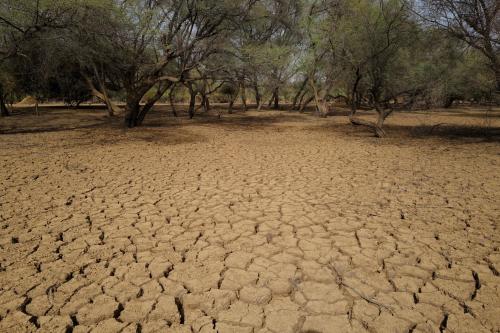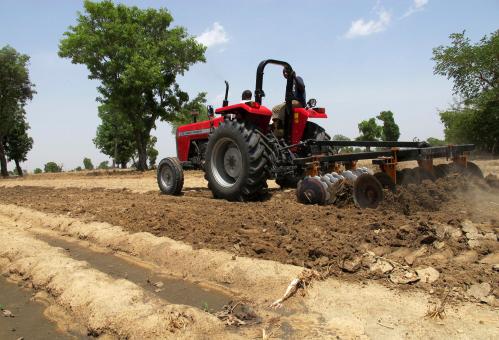Below is a viewpoint from the Foresight Africa 2022 report, which explores top priorities for the region in the coming year. Read the full chapter on climate change.
 Food and nutrition security in Africa is off track: In 2020, more than one in five people in Africa faced hunger—more than double the proportion of hungry people in any other region. In fact, the continent remains a net food importer at an annual cost of $43 billion.
Food and nutrition security in Africa is off track: In 2020, more than one in five people in Africa faced hunger—more than double the proportion of hungry people in any other region. In fact, the continent remains a net food importer at an annual cost of $43 billion.
Food security in Africa demands urgent and serious attention. Climate change is already stalling progress by interacting with multiple other stressors and shocks, including inequality, degrading natural resources, conflict, and the COVID-19 pandemic.
A 3°C warming trajectory will cause catastrophic disruption to African food systems within the next 30 years. In fact, under a 3°C warming scenario, Africa is expected to lose up to 30 percent of current growing areas for maize and banana and 60 percent for beans by 2050. Many more millions of Africans will suffer from hunger. By 2050, the 282 million of Africa’s population who are undernourished today is expected to grow to 350 million. A 1.5°C trajectory provides more options for adaptation of African food systems, but still demands urgent action. Current national pledges put the world on a 2.4°C trajectory even if they are fully achieved.
We need a whole food system approach
Leading adaptation options for food systems are well-defined and build on evidence and experience, including in Africa. Among these options, the priorities for public sector investment in Africa are fivefold: Research and extension, land restoration, water management, infrastructure, and climate information services. Some of the adaptation practices have long-term African experience to build on (e.g., landscape management, agroforestry), while others are newer areas of endeavor on the continent or globally (e.g., fiscal measures, co-benefits of mitigation finance).
Notably, a modern approach to climate adaptation needs to move beyond purely agricultural solutions into whole food system approaches. Problems with agricultural production can be addressed not only through on-farm solutions, but also through entire value chains and through policy incentives for consumers and food businesses.
The costs of failure
Financing adaptation to climate change in the agriculture and food system in Africa will be more cost-effective than financing increasingly frequent and severe crisis response, disaster relief, and recovery pathways. In fact, the costs for adaptation action in Africa are about $15 billion (0.93 percent of regional GDP). This number is a fraction of the cost of inaction, which could rise to more than $201 billion (12 percent of GDP). There will also be significant regional variations in the cost of inaction. For instance, West and East Africa could lose up to about 15 percent, and Southern Africa up to about 10 percent of their GDPs by 2050 if adaptation measures are not taken.
Agriculture and food are the leading sectors for synergies across development and climate action, delivering simultaneously on the Sustainable Development Goals, national growth and food security goals, and climate adaptation and mitigation.
The agricultural financing gap in many African countries surpasses government budgets and available donor funding. Climate finance flows from multilateral development banks to the agriculture sector in Africa increased from $433 million in 2015 to $2 billion in 2018 and then declined to just over $1 billion in 2020. Moreover, the financing gap for climate adaptation is at risk of widening in the future due to fiscal drain on resources from the COVID-19 pandemic. Low-income countries are especially hard-hit as they bear a disproportionate weight of climate disasters. (For more on climate financing for Africa, see “The criticality of climate finance for Africa.”)
Agriculture and food are the leading sectors for synergies across development and climate action, delivering simultaneously on the Sustainable Development Goals, national growth and food security goals, and climate adaptation and mitigation. The time to act on adaptation action in agriculture and food systems is now.








Commentary
The urgency and benefits of climate adaptation for Africa’s agriculture and food security
March 24, 2022